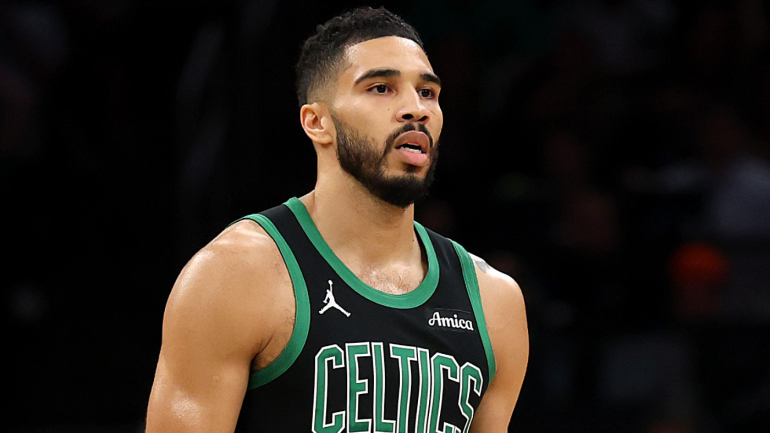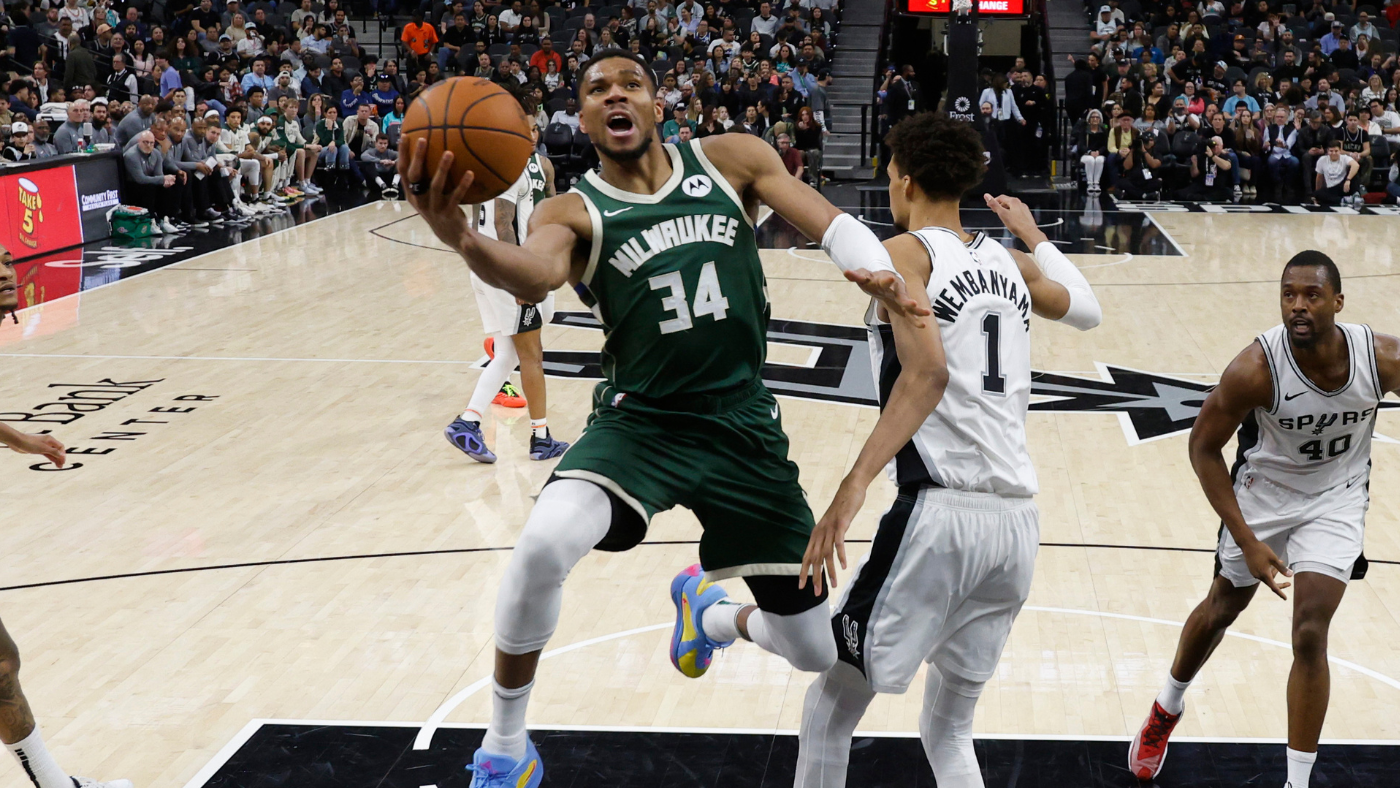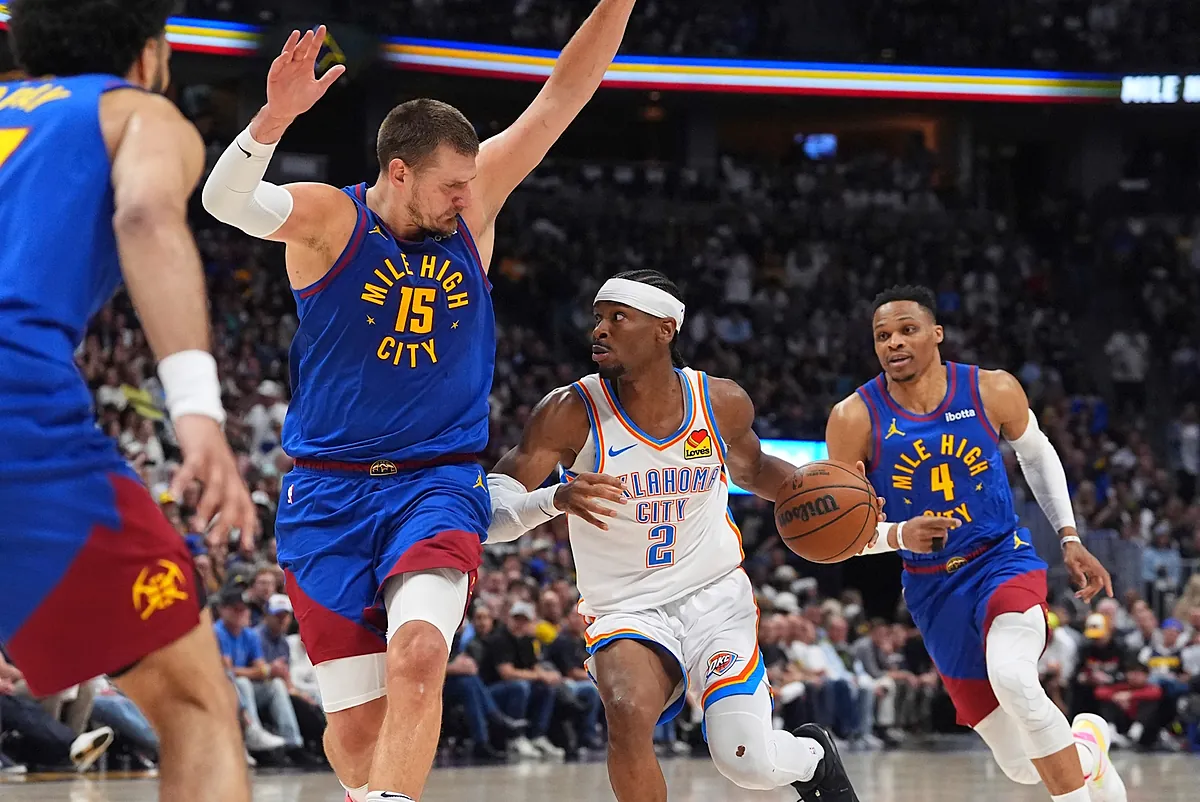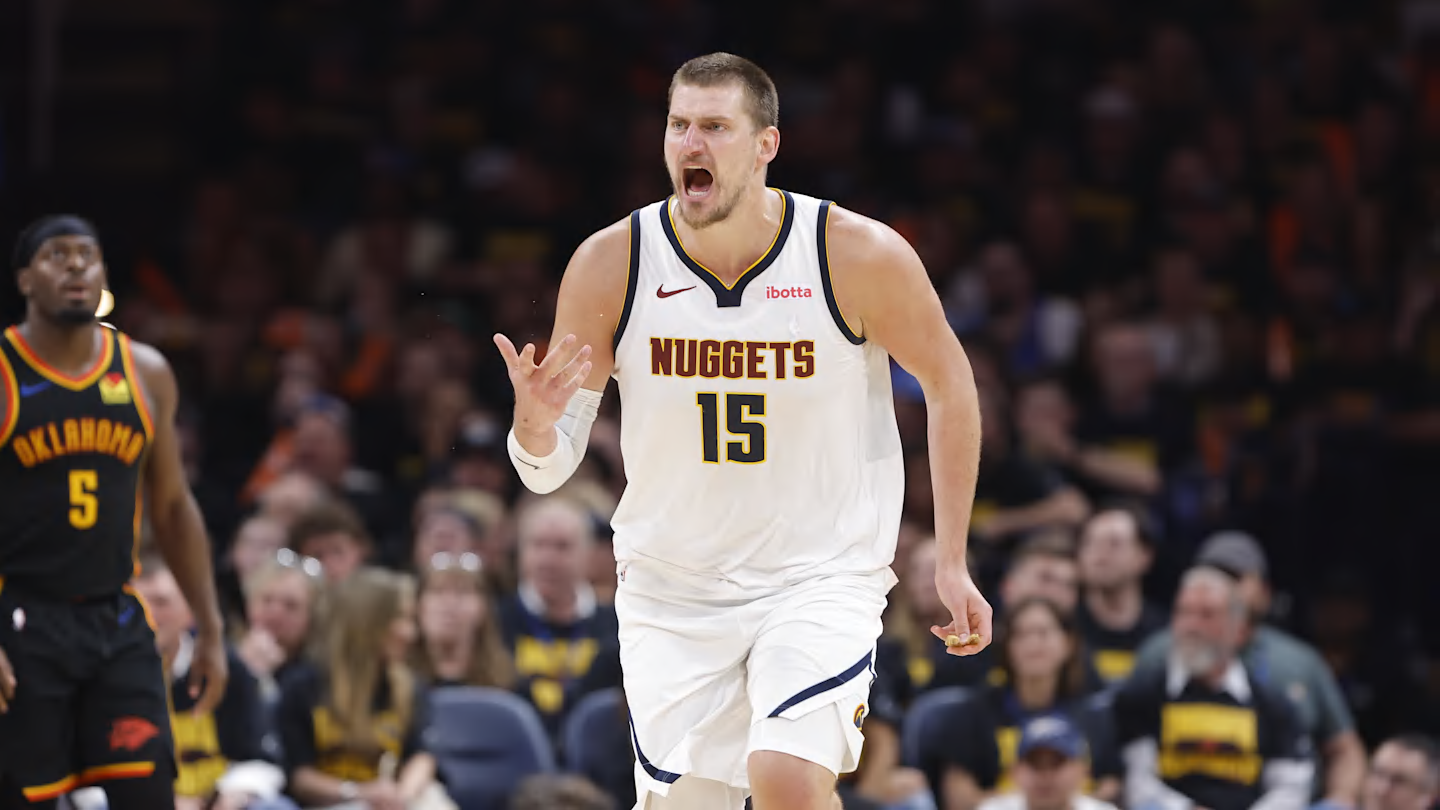
Jayson Tatum’s torn Achilles tendon, without hyperbole, is among the most consequential injuries in NBA history. Kevin Durant comes to mind as a similarly gifted player to suffer such an injury, but he was almost 31 when he went down in the 2019 NBA Finals. Tatum just turned 27. Only a handful of First-Team All-NBA players have ever missed a season in their 20s. Bill Walton and Derrick Rose were never the same. Bernard King eventually did return to All-Star form, but it took several years and he proceeded to get hurt again immediately afterward.
A week ago, a Celtics dynasty was plausible. They were -900 favorites against the New York Knicks before their second-round series began. That number is +400 on Caesars after Tatum’s injury news. Just by virtue of playing in the Eastern Conference, their path to the Finals for the next few seasons would have been easier than the minefield their primary competition would have faced out West. Yes, the CBA would have forced some depth sacrifices, but just having a superstar in Tatum and an All-Star in Jaylen Brown both in their primes playing the NBA’s scarcest position probably would have ensured perpetual contention. Only Oklahoma City felt better about its future than Boston before the second round began, and the Celtics already have a ring.
But now? The 2025-26 season, at least, is seemingly over. Boston isn’t overcoming a 3-1 deficit against New York and winning two more rounds without Tatum. The 2026-27 season, in all likelihood, has been vaporized as well. The overwhelming majority of players that tear an Achilles tendon miss a full year. There are exceptions, but they aren’t encouraging. It took Wes Matthews less than eight months to make it back in 2015, but he was never the same player he was before the injury. Durant is the best-case scenario here. He didn’t play an NBA game between June of 2019 and December of 2020. It would be irresponsible of Boston to let Tatum try his luck with the Matthews timeline, and this injury came in May. Even if he could make it back in a calendar year, the Celtics could be eliminated by then.
Tatum’s career probably resumes in October 2026. By then, the entire league landscape will have changed. Two new champions will have been crowned in his absence. The Celtics will have likely made significant roster changes. And Tatum himself probably won’t be quite the same player. So let’s dive into all of the implications of Tatum’s absence, starting with what it means for him and eventually moving into his team and the rest of the league.
So… what does post-Achilles tear Tatum look like?
There’s no clear answer. Achilles tears can ruin careers. Kobe Bryant was never the same after his. Neither was Chauncey Billups. They were, of course, far older than Tatum is now when they got hurt. If you’re looking for an optimistic spin here, it’s Tatum’s youth. Most of the best NBA players who tore an Achilles were older when they did so and maybe heading toward a decline anyway. Perhaps the younger Tatum has a better chance at eventually being an MVP candidate again.
Only two players have ever gotten to that level after an Achilles tear: Durant and Dominique Wilkins. Both did so by changing their shot diets, at least to an extent. Wilkins started to adopt the 3-point line in the years before his injury, and fully did so afterward. Before Durant got hurt, at least 16.2% of his shots came within three feet of the rim in every one of his professional seasons. That proportion was often a good deal higher. He hasn’t reached that figure since. This year, it was only 9.1%. Durant barely ever gets to the rim anymore.
Tatum is frequently criticized for not attacking the basket enough, but it’s a critical part of his game. He’s not Durant. He’s never been an elite shooter, and his three worst 3-point shooting seasons have come in the last four years. Durant has lived in the short mid-range in Brooklyn and Phoenix. Tatum is probably going to have to do more of his work there now, too, but he has a different body type than Durant, who’s skinny enough to slither through bodies in close quarters. The answer for the bulkier Tatum might be to operate a bit more in the post.
He’s fortunately always defended bigger players well. He might be a power forward moving forward, and the Celtics already use him to defend centers. But any lost mobility would deprive him of switch-ability. Klay Thompson, who also tore his Achilles, used to be among the best guard defenders in the NBA. He just doesn’t move well enough laterally to chase them anymore. He’s a forward defensively. If Tatum can still defend up, that’s a win, but what made him special over the past few years was that he didn’t have any weaknesses on either side of the ball. Now, it’s possible he has some vulnerabilities on both.
That’s not going to cost him his star status or anything. Assuming this is a one-off injury and not a recurring problem, he should be expected to at least somewhat resemble his old self. But the margins at that level are tiny. The gap between, say, the fifth-best player in the NBA and the 12th-best player in the NBA are minuscule. Tatum was closer to the former than the latter this season. It’s probably going to flip when he gets back. Now, it’s up to the Celtics to use their time without him to set up comfortable circumstances for him to return to.
Are the Celtics about to take a gap year?
The Warriors entered the 2019-20 season without Durant or Thompson. They lost Stephen Curry and tanked hoping to take advantage their rare opportunity to do so. Could Boston do the same? Probably not, at least not to the degree Golden State did. The Warriors, at that point, were incredibly top-heavy after years of sustaining a dynasty. The Celtics aren’t. Their roster will be worse next season, but certainly not bad enough to tank barring a surprising rash of injuries. Remember, Boston is in the East. It’s hard to tank outright in the East. As Philadelphia and Brooklyn just proved, it takes effort to even avoid the Play-In Tournament. So don’t expect a high lottery pick.
However, there are some important things the Celtics can achieve with Tatum out. For starters, there’s no chance whatsoever they’re operating above the second apron again next season. Their 2032 first-round pick is already frozen, and once you spend three seasons out of five above that line, the frozen pick drops to the end of the first round. The Celtics only have one more second-apron season available in the next four. They’re not wasting it on a Tatum-less season. This is an achievable goal.
The harder one would be ducking the tax entirely. The Celtics have now paid it three seasons in a row. Teams that have paid the tax in three of the previous four seasons pay a higher, repeater rate, and the repeater penalty gets significantly harsher starting next season. When you’ve seen stories about the Celtics potentially having a half-billion dollar payroll next season, this is why. According to Yossi Gozlan, the Celtics are currently roughly $42.7 million above the projected tax line for next season. Ducking it entirely wouldn’t be impossible, but it would be a tall order.
And of course, Boston probably wants to evaluate its younger players next season. There’s no reason Payton Pritchard shouldn’t start next season after winning Sixth Man of the Year. He’s 27 and the Celtics have him locked into a preposterously cheap contract for three more seasons. It’s time to see if he can handle a starting job. Baylor Scheierman, JD Davison and Jordan Walsh should play as well. It’s not championship or bust anymore. The goal for now is to see who should still be around when Tatum returns. Spoiler alert: it won’t be all of the veterans.
Who’s getting traded?
Not a trade, but we’d be remiss if we didn’t acknowledge the possible end of Al Horford’s time with the Celtics. He’s not under contract for next season and Boston still has $230.5 million in committed salaries and another $262.5 million or so in estimated tax penalties, at least with the current group in place. Retaining Horford even at this year’s $9.5 million salary just doesn’t seem plausible. He’s 38. This might be the end of a Hall of Fame career, and at the very least, it’s the likely loss of Tatum’s most stable teammate aside from Brown.
Speaking of Brown, the thought of moving him now isn’t crazy. The Celtics could justify paying supermax money to two players at the same position when the rest of the roster was flawless and both were safe bets. If Tatum declines and the rest of the roster is ordinary, it gets harder. The counter, of course, is that Brown is insurance against that possible Tatum decline. Do you really want to give up your healthy star wing when you don’t know what to expect out of the unhealthy one?
For the Celtics to consider a Brown trade, it would probably have to net either a top draft pick or a young building block. Philadelphia could match salary with Paul George and offer Boston the No. 3 pick. That’s probably not enough on its own, but it’s an interesting starting point. Memphis has spent the entire Ja Morant era looking for a star small forward. It has just enough cap space to swap Desmond Bane and draft picks for Brown, though doing so would prevent them from renegotiating and extending Jaren Jackson Jr. Cleveland has financial problems of its own to navigate, but man would Brown look good next to Donovan Mitchell and Evan Mobley, and Darius Garland could help ease Tatum back in offensively to a smaller role. It would have to be something like this for it to be worthwhile. They have no reason to trade a dollar for quarters and dimes. They’d need something premium that would also help out their finances. Even then, it’s extremely unlikely.
The far likelier trade candidate is Jrue Holiday. When Boston re-signed him to a massive four-year extension last season, it was with the understanding that it probably wouldn’t age well. That didn’t make it a bad idea. Holiday helped them win one championship, and the thought behind the extension was that he’d be able to help them win another one or two in the early portion of the deal. But he’s 34 and starting to decline meaningfully. He has three expensive years last on his contract. That deal could look disastrous in a year or two, and even if it doesn’t, he shouldn’t waste his last productive years on a team that won’t meaningfully contend in 2026.
Teams are more cost-conscious than ever. As easily as Holiday fits onto most rosters, he’s not going to generate the flurry of trade interest that he did in 2023. The field is narrower here, win-now teams that don’t have the assets to seek out a younger, cheaper version of him. Maybe the Celtics could get a nice young player or a pick here, but the real goal is going to be escaping the contract.
Phoenix comes to mind after their disastrous attempt to convince Bradley Beal to take on a Holiday-like role this season. The Suns have little the Celtics would want, but that could change when they trade Kevin Durant. The Lakers probably have their matching-salary earmarked for a center. If they get someone on a rookie contract, as they tried to do with Mark Williams at the deadline, they might be able to redirect their bigger expiring salaries to Boston. Dallas badly needs guard help while Kyrie Irving recovers from a torn ACL, and as Nico Harrison likes to say, “defense wins championships.” Matching Holiday’s money wouldn’t be easy, but that’s a reasonable fit. The return won’t be huge, but the Celtics should find a taker.
Finding a taker for Kristaps Porziņģis is going to be harder. Boston just can’t rely on him to stay healthy. He’s on a $30.7 million expiring salary for next season. When the Celtics had Horford available to fill in for him and big names at every other position, they could afford to treat Porziņģis as a luxury. But now, if they’re going to pay big money for a center, it has to be someone they can trust to stay on the floor.
We covered the idea of Boston trying to duck the tax to delay the repeater penalty above. Dumping Porziņģis is the path to doing so. The Nets are the only team with significant cap space this offseason. That puts Brooklyn in a unique bargaining position. There’s nowhere else for the Celtics to dump Porziņģis if saving money is the priority. The Nets could ask Boston for meaningful draft compensation to cooperate. If the Celtics are comfortable paying the repeater tax, they can tell Brooklyn to kick rocks. Worst-case scenario, the Celtics could always trade Porziņģis as a hefty expiring salary along with its own draft picks to get players back. That begs the question: what should Boston even want?
What do the Celtics need to support post-injury Tatum?
The Celtics have played a mostly position-less brand of basketball over the past few years. Their guards defend wings. Their wings are their primary ball-handlers. Their centers shoot 3s. If you can play this way, you probably should. It’s part of what makes Oklahoma City so special. It won the Raptors and Warriors championships. It just takes a nearly flawless roster-building execution to set up. It takes having the right assets and landing players at the right time and taking the right risks. Given Boston’s precarious finances and the general difficulty of finding players like this, it’s going to be a hard setup to replicate.
If they can find another Porziņģis or Holiday or Horford out there that they can afford, by all means, go get him. But those players are rare and expensive. In all likelihood, they are going to have to be a bit more conventional moving forward. Tatum has effectively been Boston’s point guard this season. Asking him to continue playing that role after his Achilles tear is probably a bit ambitious. This is where the idea of a Brown-for-Garland swaps makes some sense. If Boston is going to pay two stars, maybe the second one shouldn’t play Tatum’s position.
More likely, a primary ball-handling type comes back in a Holiday or Porziņģis trade. Those are in short supply on the trade market right now, at least below the star level. Brad Stevens hit a home run with the Derrick White acquisition, and his growth as a ball-handler lightens the burden on any other possible back court addition. Boston doesn’t need a Trae Young-esque “every possession runs through me” point guard, but it needs someone who can move White into more of an off-ball role. Perhaps Stevens sees a bigger role out there for someone as he did White in 2022. If Coby White hadn’t leveled up so thoroughly after Zach LaVine was traded, he’d be a nice answer here. Now, Chicago almost certainly keeps him. Maybe Collin Sexton, though he’s always been much more of a scorer than a playmaker. As 2026 is no longer a priority, the Celtics can afford to be patient here. If it takes a year to find someone, so be it.
Center is the more pressing concern, given Horford’s age Porziņģis’ health and contract. This is fortunately a remarkably deep trade market for big men. Dallas has a frontcourt logjam. Ask about Daniel Gafford and Dereck Lively. Would Cleveland consider a Jarrett Allen trade if it loses to Indiana? Nic Claxton is frequently in trade rumors. So is Walker Kessler. The Hornets literally did trade Mark Williams, it just got rescinded. For the right price, maybe Boston’s doctors could pass him. Not all of these players will get traded. Some will.
None are Horford or Porziņģis. There are only a handful of big men in the NBA who can both defend and shoot. Boston, through shrewd management and excellent timing, managed to get two of them. The odds of that happening again are minimal. The next iteration of the Celtics is probably a bit more normal. Protecting Tatum physically probably means treating him as less of a point guard on offense and less of a center on defense. Their next big man is probably a more traditional rim protector and interior scorer. That doesn’t necessarily mean he will be worse. Just different. A lot of things are going to be different by the time Tatum returns.
What does this injury mean for the rest of the NBA?
Cooper Flagg landed in Dallas on Monday. While the destination was a surprise, the general region was not. For whatever reason, the NBA’s best prospects and players just keep landing in the Western Conference. The San Antonio Spurs jumped up from No. 8 to No. 2 in Monday’s lottery. That made them the favorites to land Giannis Antetokounmpo. Get ready to add another star to the Western Conference’s tally.

The Celtics have been the NBA’s geographic counterbalance. For the past several years, the Eastern Conference has always had one reliable, Finals-caliber team in Boston. They were the measuring stick. For the time being, they’re out, and when they return, there’s no telling what they’ll look like. This changes everything for the rest of the conference.
Obviously, this is a golden opportunity for the Knicks, who just made their all-in moves with Mikal Bridges and Karl-Anthony Towns. Indiana, their likely opponent in the Eastern Conference finals, is in the same boat. They’ll never have a cleaner path to the Finals than they have right now. They both have a chance to assert conference dominance net season and beyond.
This doesn’t just apply to the teams that are still standing. Suddenly, everybody has to reconsider their place in the pecking order. Would Philadelphia put the No. 3 pick on the table in a trade for veteran help knowing that the big, bad bullies in Boston are no longer in their way? Are the Magic ready to accelerate their timeline and go get the scorer they’ll need to contend? What about Cleveland? The Cavaliers just won 64 games. They will almost certainly lose to Indiana as they now trail 3-1 and are dealing with a rash of injuries. Like Boston, they are facing a second-apron crunch. Do they bite the bullet and keep this very expensive team together a year longer to capitalize on a Celtics-free East?
Nature abhors a vacuum. Someone is going to look at the hole the Celtics are leaving atop this conference and try to fill it. It might be multiple teams. But chances like this are rare. Just ask all of those dominant West teams that are currently bludgeoning one another. As consequential as Tatum’s absence is for Boston, it means just as much for everyone else. The conference’s alpha is wounded, and that changes how every other team in the East will operate moving forward.


